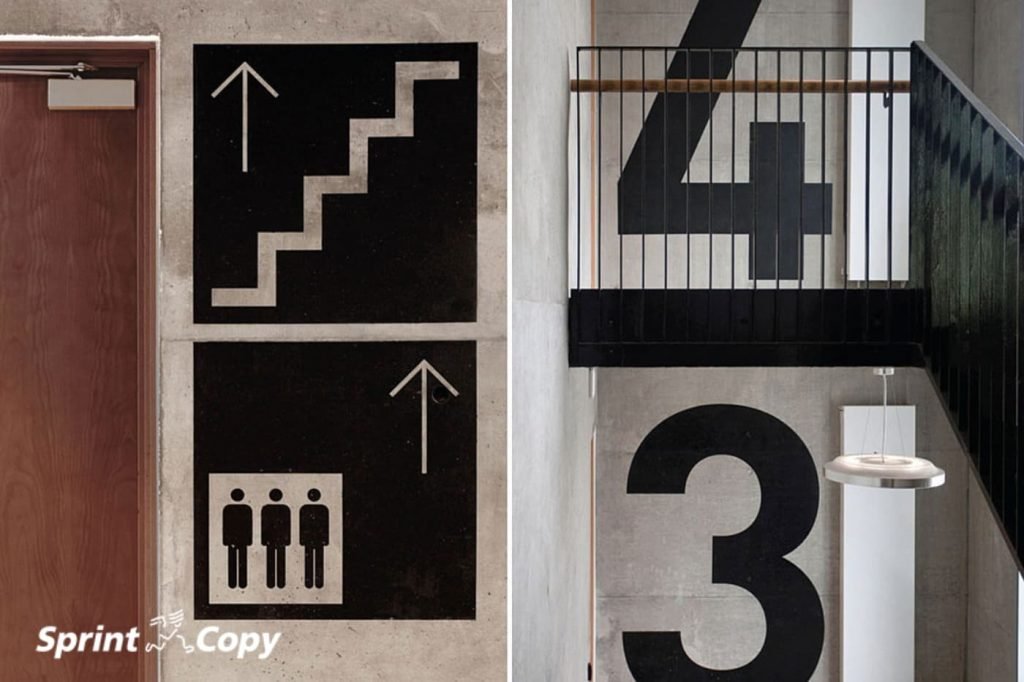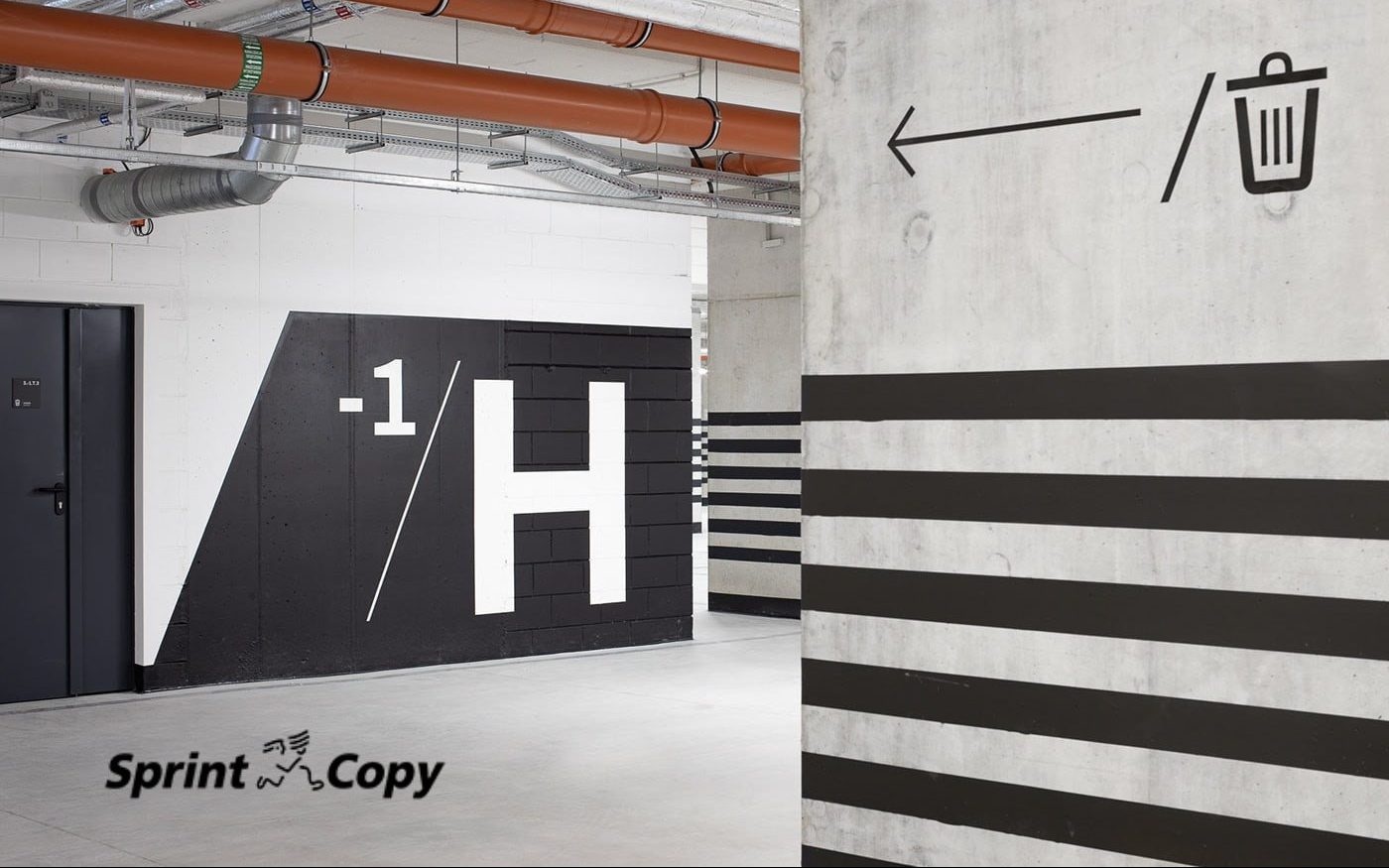How wayfinding creates a smooth user journey
Imagine this: you enter a bustling airport, unfamiliar with the layout. Anxiously searching for your gate, you navigate a confusing maze of corridors and cryptic signs. Frustration builds as precious minutes tick by.
This scenario highlights the importance of wayfinding, the often-overlooked art of guiding people through a physical space.
Beyond signage: The art of user experience
Effective wayfinding goes beyond simply placing signs. It's a strategic approach to user experience (UX) that transforms a physical environment into an intuitive and stress-free space.
Think of a well-designed website. Just as clear menus and intuitive navigation buttons guide users online, well-planned wayfinding achieves the same in the real world. Consider a user-friendly e-commerce platform. The layout, product categorization, and search functions all contribute to a smooth user journey, ultimately leading to a purchase.
Similarly, well-designed wayfinding helps users reach their destinations efficiently, fostering a positive experience within a physical space.
The benefits of a smooth user journey
So, why invest in wayfinding? The benefits are numerous:
- Reduced frustration: Clear and concise wayfinding eliminates confusion, saving users time and reducing stress.
- Enhanced Brand Image: A thoughtfully designed wayfinding system reflects a company's attention to detail and commitment to user experience, fostering a positive brand image. This not only helps visitors navigate but also subtly reinforces the brand identity.
- Increased efficiency: By guiding users to their destinations quickly, wayfinding improves overall efficiency within a space. Picture a busy office building. Clear floor plans and directional signage can significantly reduce the time employees spend searching for meeting rooms or colleagues' offices.
- Improved safety: Clear signage can direct users towards emergency exits and safety features, enhancing overall safety. This is particularly crucial in large public spaces like shopping malls or convention centers.
- Increased sales: Well-designed wayfinding can subconsciously influence customer behavior. By guiding them past product displays and highlighting key areas, wayfinding can increase the likelihood of impulse purchases and unplanned browsing.
The key components of effective wayfinding
Here's what makes a wayfinding system truly effective:
- Clarity: Signs should be easy to understand, with clear messages and concise directions. Simple language, universal symbols, and appropriate font sizes are crucial.
- Consistency: Maintain a consistent visual language throughout the space. This includes using the same fonts, colors, symbols, and design elements across all wayfinding materials. Inconsistency can lead to confusion, especially in large or complex environments.
- Hierarchy: Prioritize information based on user needs. The most frequently accessed destinations or critical information should be most prominent.
- Visual Appeal: Effective wayfinding doesn't have to be bland. Integrate design elements that complement the space's aesthetics while remaining functional.

Tailoring wayfinding to different needs
While core principles remain constant, effective wayfinding caters to diverse user needs.
- Accessibility: Consider users with disabilities by incorporating Braille signage, clear audio instructions, and ensuring ample space for wheelchairs and strollers. This ensures everyone can navigate the space independently and comfortably.
- Multilingual Support: In areas with a diverse population, consider incorporating multilingual signage or interactive wayfinding systems that can display directions in different languages. Multilingual wayfinding ensures visitors from all over the world can navigate the space with ease.
- Digital Integration: Explore integrating digital elements like interactive kiosks or smartphone apps that provide real-time navigation assistance.
The power of collaboration
A successful wayfinding project requires collaboration between different stakeholders.
Architects and designers
Understanding the space's layout and user flow is crucial. Architects and designers can provide valuable insights into integrating wayfinding seamlessly within the environment. Collaboration between architects and wayfinding specialists is essential to ensure the system aligns with the building's layout and caters to the specific needs of visitors and staff.
Project managers
Ensuring clear communication and a smooth execution process is essential. Project managers keep all parties involved on the same page, ensuring a timely and successful implementation.
The role of a printing company in wayfinding
Partnering with a reputable printing company with expertise in wayfinding solutions can ensure your project is a success.
At Sprintcopy, we guide you through the entire process, from material selection to final installation, resulting in a wayfinding system that is both functional and aesthetically pleasing. We also offer:
- High-quality materials
- Graphic design
- Large-format printing
- Color accuracy and consistency
- Finishing touches
- Project management
By investing in well-designed wayfinding, businesses and organizations create a user-centric environment that fosters positive experiences. A smooth user journey is no longer a luxury, it's a necessity.
¡Don’t wait more! ¡Contact us and let’s start developing your wayfinding strategy!

